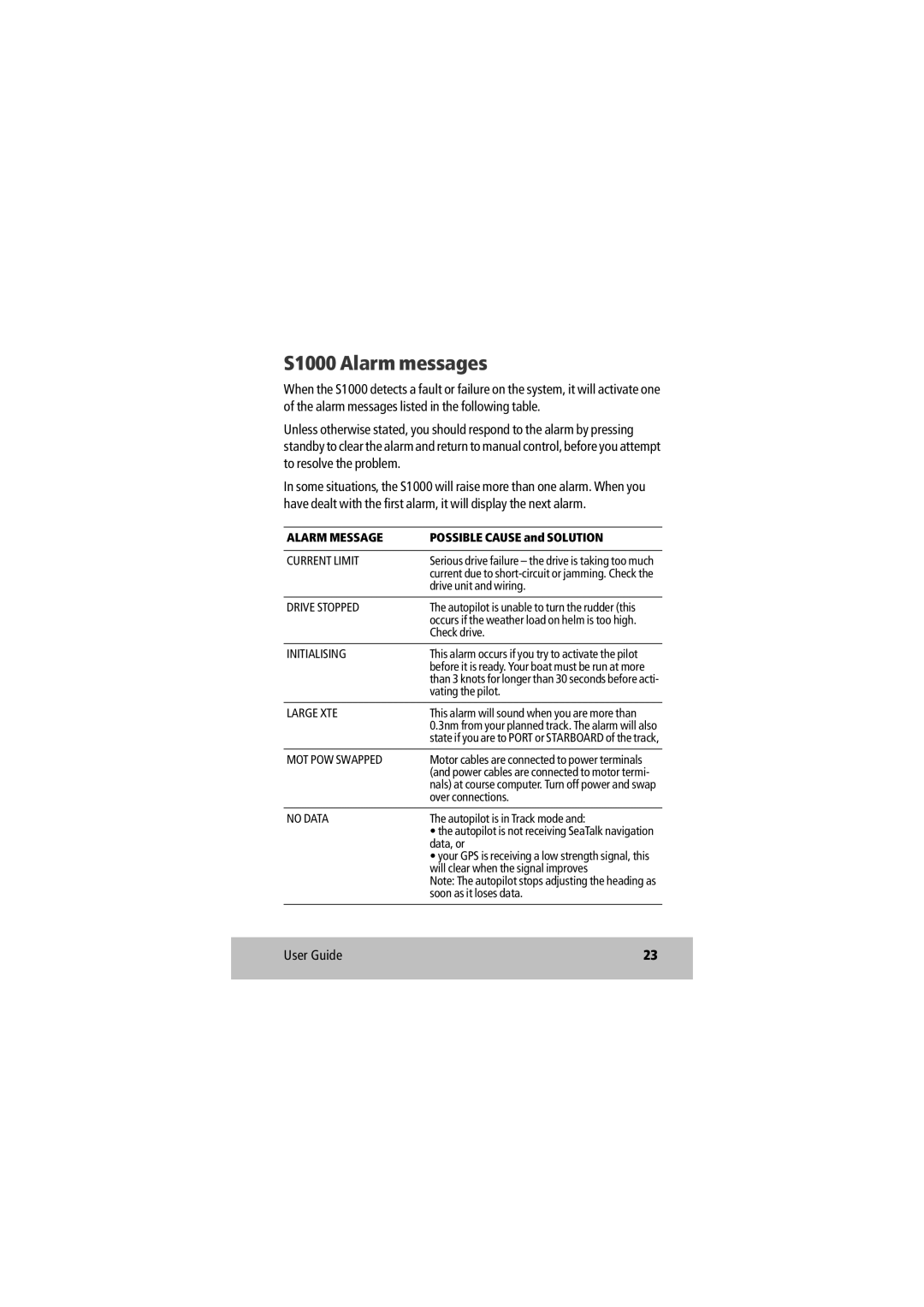S1000 Alarm messages
When the S1000 detects a fault or failure on the system, it will activate one of the alarm messages listed in the following table.
Unless otherwise stated, you should respond to the alarm by pressing standby to clear the alarm and return to manual control, before you attempt to resolve the problem.
In some situations, the S1000 will raise more than one alarm. When you have dealt with the first alarm, it will display the next alarm.
ALARM MESSAGE | POSSIBLE CAUSE and SOLUTION |
|
|
CURRENT LIMIT | Serious drive failure – the drive is taking too much |
| current due to |
| drive unit and wiring. |
|
|
DRIVE STOPPED | The autopilot is unable to turn the rudder (this |
| occurs if the weather load on helm is too high. |
| Check drive. |
|
|
INITIALISING | This alarm occurs if you try to activate the pilot |
| before it is ready. Your boat must be run at more |
| than 3 knots for longer than 30 seconds before acti- |
| vating the pilot. |
|
|
LARGE XTE | This alarm will sound when you are more than |
| 0.3nm from your planned track. The alarm will also |
| state if you are to PORT or STARBOARD of the track, |
|
|
MOT POW SWAPPED | Motor cables are connected to power terminals |
| (and power cables are connected to motor termi- |
| nals) at course computer. Turn off power and swap |
| over connections. |
|
|
NO DATA | The autopilot is in Track mode and: |
| • the autopilot is not receiving SeaTalk navigation |
| data, or |
| • your GPS is receiving a low strength signal, this |
| will clear when the signal improves |
| Note: The autopilot stops adjusting the heading as |
| soon as it loses data. |
|
|
User Guide | 23 |
|
|
